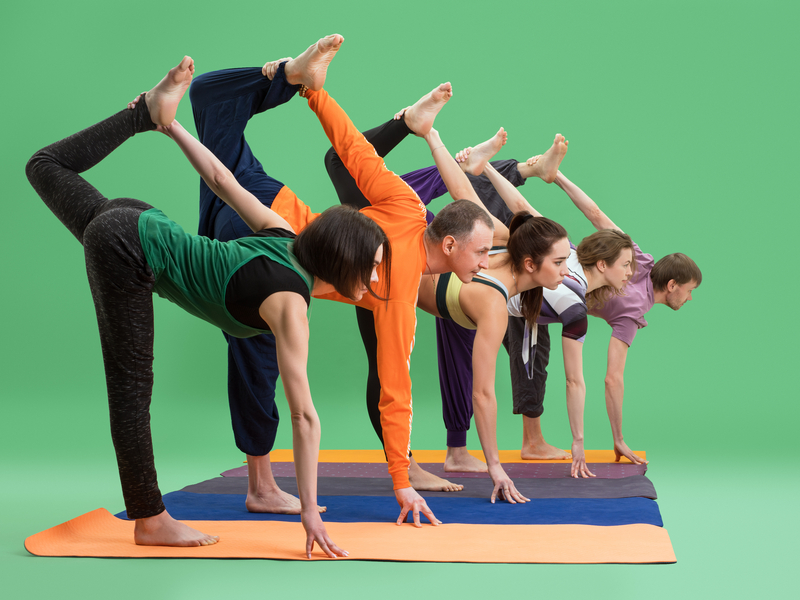You may think that yoga is a relatively recent exercise trend, but it has actually been around for thousands of years. It has gained recent popularity as a way to help people deal with life's daily stresses. There has also been a growing interest in exercises that challenge both the body and the mind.
The word “yoga” means to “unite.” That's precisely what yoga is about, unifying the complete person, not just the body, but the mind and the spirit as well. Yoga is a combination of physical postures or poses, breathing exercises, and meditation that increases flexibility, strength, and muscle tone. Yoga exercises help your body and mind work in sync at all times.
Types of yoga
There are several types of yoga, each of which has a unique set of characteristics. Some of the most common types of yoga focus on a combination of concentration, gentle stretching, and strengthening exercises. Mantra yoga has students repeat a word or phrase to help them control their minds. Other yoga styles focus on respiration and controlled breathing techniques in order to generate more vitality and energy.
Ashtanga yoga, also called “power” yoga, utilizes a series of postures that flow together to create constant movement. This type of yoga emphasizes muscular endurance and flexibility. Many of the poses place the majority of body weight on the wrists and the shoulders. This type of yoga is not for beginners, especially those who lack upper body strength.
Bikram yoga helps increase flexibility. It consists of a series of 13 standing and 13 sitting poses, along with breathing exercises and techniques. Some people believe that Bikram yoga can help alleviate some of the symptoms of arthritis and chronic back pain. If you don’t like heat, you may want to keep in mind that many Bikram yoga classes are conducted at room temperatures of 80 to 100 degrees or higher.
One type of yoga that is suited for beginners is Sivanada. It is gentle, meditative, relaxing, and stress-relieving. There are 12 basic poses that make up the “Sun Salutation.” Each pose is held for a sustained period of time, which is said to increase the connection between the body and mind, allowing your body to adjust to each pose as your mind relaxes. Most Sivanada classes begin and end with a short mantra chant followed by prayer.
Benefits of Yoga
You may choose to take yoga classes because you wish to find a way to relax your mind, body, and spirit in your high-stress life. Many of the existing stress-reducing techniques that you have heard about, such as deep breathing, are based on the principles of yoga. Some doctors who treat patients with cardiovascular disease have incorporated yoga into their treatment plans because many of these conditions are exacerbated by stress.
Some of you may be looking for a way to stretch and strengthen your body. When you add yoga to your exercise routine, you will notice that your performance improves in other activities. After a few yoga lessons, you will have learned the basic poses and breathing techniques, and you should able to easily make them a part of your regular routine.
Don’t be afraid to try yoga because it's new to you. Yoga can fit into anyone's lifestyle. You may be interested in the types that focus on breathing and relaxation, or you may prefer a type of yoga that focuses on flexibility and strengthening. If you are already in good shape, yoga can increase your level of fitness. If you are just beginning to exercise on a regular basis, yoga might be the best way for you to get started on keeping your body and mind fit!
*Specialist in sports nutrition and physical activity at MyDiet TM
